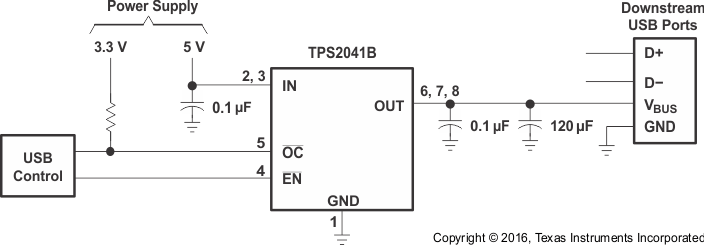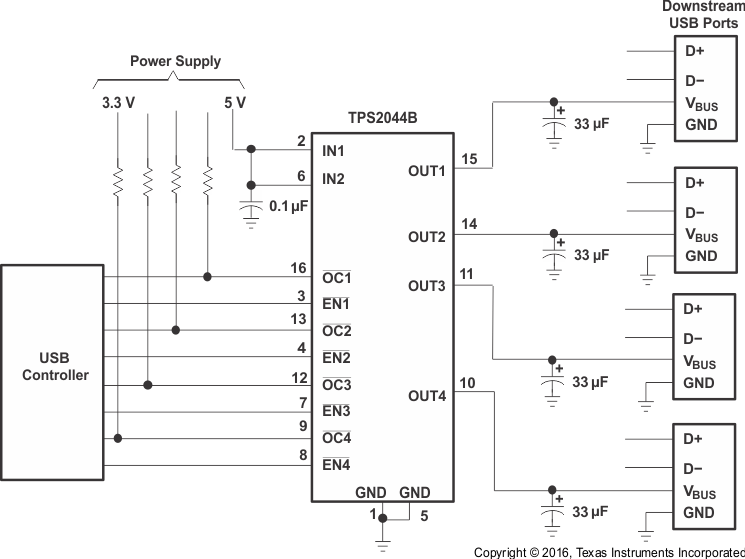JAJS253N june 2010 – july 2023 TPS2041B , TPS2042B , TPS2043B , TPS2044B , TPS2051B , TPS2052B , TPS2053B , TPS2054B
PRODUCTION DATA
- 1
- 1 特長
- 2 アプリケーション
- 3 概要
- 4 Revision History
- 5 General Switch Catalog
- 6 Pin Configuration and Functions
- 7 Specifications
- 8 Parameter Measurement Information
- 9 Detailed Description
- 10Application and Implementation
- 11Power Supply Recommendations
- 12Layout
- 13Device and Documentation Support
- 14Mechanical, Packaging, and Orderable Information
パッケージ・オプション
メカニカル・データ(パッケージ|ピン)
サーマルパッド・メカニカル・データ
発注情報
10.2.2 Host and Self-Powered and Bus-Powered Hubs
Hosts and self-powered hubs have a local power supply that powers the embedded functions and the downstream ports (see Figure 10-11 and Figure 10-12). This power supply must provide from 5.25 V to 4.75 V to the board side of the downstream connection under full-load and no-load conditions. Hosts and SPHs are required to have current-limit protection and must report overcurrent conditions to the USB controller. Typical SPHs are desktop PCs, monitors, printers, and stand-alone hubs.
 Figure 10-11 Typical One-Port USB Host and Self-Powered Hub
Figure 10-11 Typical One-Port USB Host and Self-Powered Hub Figure 10-12 Typical Four-Port USB Host and Self-Powered Hub
Figure 10-12 Typical Four-Port USB Host and Self-Powered Hub